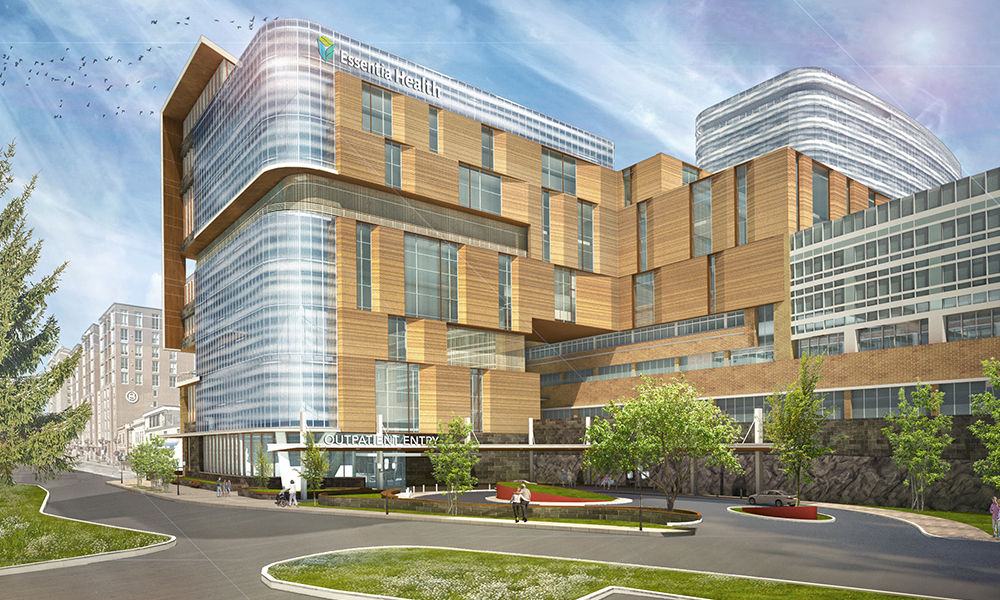
13 Sep McGough, EwingCole Tackle Duluth’s Hillside Hospital

McGough, EwingCole Tackle Duluth’s Hillside Hospital
McGough and EwingCole develop novel solutions for a hillside site, allowing Essentia Health to create more efficient patient services
Jeff Yoders | Digging Deeper
Engineering News-Record
September 13, 2021
Nestled into the north shore of Lake Superior, the city of Duluth, Minn., sits at the westernmost point of the Great Lakes. Formed by the glaciers that created the lakes themselves, much of Duluth’s Central Hillside neighborhood is built into a rocky, iron-rich slope with soil no deeper than 20 ft to 30 ft at any point and much of it is exposed rock.
The tallest building in Duluth today is only 16 stories and 247 ft tall due to the difficult ground and the winds blowing in off the lake.
Despite the challenge that Essentia Health’s existing St. Mary’s Medical Center and two clinics posed in Central Hillside, the owner chose to build 942,000 sq ft of new space on top of the existing hospital and where the clinics had been. The existing buildings have three different street elevations jutting into the hillside. The $900-million hospital expansion is on track to be completed in 2023, and the master plan for the Vision Northland medical campus consolidates much of Essentia’s downtown campus while replacing the existing St. Mary’s Medical Center.

“From an organization standpoint, we’re really looking to consolidate our campus into a smaller footprint by building more vertically so we are able to tie into two of our existing clinics,” says Dan Cebelinski, Essentia Health’s director of facilities.
In 2017, architect EwingCole took on the challenges that include the rocky hillside, the need to build on top of a working hospital that had to stay open during the construction phase and connecting it to the clinics. The interconnected new inpatient hospital and outpatient building will rise 19 stories and 344 ft over the combined building’s Superior Street elevation. Between the two towers, eight steel trusses form a link between the lower outpatient building along Superior Street and the hospital’s bed tower along Second Street. More outpatient space, hospital support space and a new emergency room fill the gap between them including spanning over First Street. Two sizes of trusses are being used: one 69 ft long and weighing 42 tons and one 74 ft long and weighing 48 tons.
“One of the goals was to improve efficiencies,” says Robert McConnell, president of EwingCole. “We addressed the challenge presented by all of these different buildings crossing streets and sky bridges early in the planning stages, leading us to as efficient a building design as possible. The site ends up being advantageous because of the split that a vertical orientation can give you—that separation between inpatient and outpatient spaces.”
When general contractor McGough Construction started construction in 2019, the first thing crews had to do was remove existing structure and blast more than 40,000 cu yds of rock from the hillside. Vibration from blasting and excavating had to be monitored to preserve the walls and foundations of the existing buildings that were being incorporated into the new project, but also to allow medical care to continue at the existing St. Mary’s hospital. The emergency room had to remain open 24 hours as well.


